FAQs
Most frequent questions and answers
Anyone who wants their body to function effectively should be assessed. Treatment will only be provided to those who are found to have a measurable need for care.
Although upper cervical chiropractors often end up seeing patients with fairly significant discomfort, the assessment that occurs allows the practitioner the ability to visualize and reduce the misalignment long before symptoms are present. The postural rebalancing created by the upper cervical adjustment allows for the body to have less gravitational stress and therefore the person can direct that now unused energy to self-healing, maintenance and thinking.
What makes NUCCA chiropractic spinal care unique compared to other care?
Generally the approach to the care of the spine is in two different ways. The majority of practitioners attempt to influence the spine in areas of segmental or local fixations to increase mobility and hope for improved structural stability. NUCCA, (as well as a few other chiropractic techniques), approach the spine with the ability to improve structural and sustained postural balance that leads to improved spinal stability along with balanced mobility. The benefit of NUCCA care is that long term spinal balance is maintained and that produces improved overall health and well-being. All spinal practitioners agree that spinal care is important. The approaches vary from localized segmental care of many providers to the NUCCA practitioners that offer upper cervical care that affects the whole body balance and the long term spinal stability.
When posture is corrected, the entire body rebalances resulting in less stress to all areas including your low back.
Your postural muscles are constantly working to maintain an upright posture. Postural distortion results in uneven weight distribution over all of your joint surfaces. The muscles throughout your neck, back, arms and legs will compensate for this shift in weight. Pain will show up in the area of greatest breakdown. The reduction of postural distortion provided by the NUCCA procedure decreases the stress on all areas of the body and allows for the possible relief of pain and proper healing. For detailed statistics on the likelihood of positive response to a variety of conditions click here.
For the same reason why one is able to move a pile of heavy bricks with a light push of a wheelbarrow: leverage.
Although the patient feels only a slight pressure behind their ear while being adjusted, there is adequate force being put into the neck. Using the first vertebra and the weight of the head to gain a biomechanical advantage, the doctor places their own body on a calculated angle to ensure the adjustment is specific to the patient’s individual misalignment. The force generated by the doctor is transferred to the patient in such a gentle and precise fashion that many patients are unaware of any intervention whatsoever.
Thoughts, traumas, and toxins are all stressors that can contribute to a misaligned state.
After your first adjustment in our office you will be given recommendations regarding daily activities to help maintain alignment. The three T’s (thoughts, traumas and toxins) are all contributors to maintaining or losing alignment. Thoughts include negativity or stress Ð think about the tightness in your shoulders after a long day at work. Have you ever considered what those muscles are connected to? Traumas are a more obvious cause, however doesn’t necessarily have to be a car accident or fall. Daily repetitive postures or movements can be considered an ongoing traumatic event. Toxins can be dietary or environmental and can also play a role in maintaining or losing alignment due to the stress they place on your body’s systems.
No, however often people who experience chiropractic recognize the health benefits and choose a lifestyle that includes lifelong chiropractic care.
There is a misconception that once one begins seeing a chiropractor, they need to see one for the rest of their life. A possibility for this perception may be due to the fact that the healing process requires time and multiple visits to the Chiropractor may be indicated to stabilize the spine until the body knows how to hold the spine in an aligned position on its own. The longer your spine has been breaking down (which is usually much earlier than the initial onset of symptoms), the longer it will typically take to attain a stabilized state.
Symptoms can occur after years of altered function. We feel prevention and optimization is better that reactive, distress care.
Our assessment includes objective measures that are independent from subjective symptoms. It is best to be assessed periodically to ensure that if you are misaligned but non-symptomatic you can be adjusted to prevent your body from being accustomed to a misaligned state once again and avoid the spinal deterioration that often involves a return to pain.
No, a true subluxation will not realign on its own.
Many times patients may feel that they were “out of alignment” and they were able to regain alignment on their own. A true subluxation can only be corrected by a third party. What the individual likely felt was the adaptation of the body to stress that they were able to manage without assistance. Our goal in this office is to maintain the body in a state of reduced stress so the body can adapt to the stresses and strains of everyday life without requiring assistance to manage a breakdown.
Yes, we believe all children should have the benefit of a properly balanced body.
Children can be adjusted using the NUCCA procedure right from birth. Often children do not need the full NUCCA assessment as their many simple reflexes that can be checked, allowing for a modified exam. Due to the tendency for a child’s misalignment to have been present for a relatively short period of time the misalignment is typically less complex. Children also generally respond more quickly to adjustments and usually require fewer adjustments to attain spinal stability. A fabulous textbook on kinematic imbalances in children, their effects and treatment was published by the German medical physician Heiner Biedermann (Manual Therapy in Children).
Be assessed by a NUCCA trained chiropractor so that it can be determined whether or not an adjustment is indicated.
By paying attention to your body, you may become more sensitive to whether or not you are in alignment. Although some rely on the return of their symptoms to tell them when they’ve lost their alignment, we recommend patients to pay attention to their reflection in the mirror; paying attention to head tilt or a low shoulder for example. Other cues may include where they feel their weight distributed on their feet, or if a change in gait is observed. More subtle indications may even include having to adjust your car rearview and side mirrors. Even with all of these clues, it is still recommended that periodic chiropractic assessments be performed to verify proper balance.
NUCCA has been shown to be very effective in reducing postural distortion. Whether or not a person’s postural distortion is related to symptoms they are exhibiting can only be determined by improving the posture and observing changes.
There are three possible effects that are demonstrated after an adjustment :
- Person feels no significant change.
- Person feels a change in symptoms with immediate improvement.
- Person experiences new short-term symptoms associated with functioning in a new structural position.
Responses to the adjustment vary from nothing, to muscle soreness, and from fatigue to a feeling of euphoria. Due to these individualized responses all patients are given a list of things they may experience so they are familiar with what responses are normal to expect. Due to the significant postural rebalancing that occurs with the upper cervical adjustment people will often feel stiff and sore for 2-4 days as the body adapts to its new position. This discomfort is usually associated only with the first and/or second adjustment.
You are only adjusted when the objective findings indicate you are subluxated (i.e. postural distortion, a contractured/shortened leg).
How often you get adjusted is directly related to your body’s ability to maintain your alignment. You will be given recommendations throughout your period of care in the office which is intentioned to help you achieve and maintain an aligned state. Our goal is to adjust you as few times as possible, however quarterly to semi-annual assessments are usually recommended to assure that any progress isn’t lost along the way.
Healing is individual and there are many contributing factors. The more personal responsibility the patient assumes in this process, generally the better the results.
The healing process takes time. If you were to break an arm, the medical physician would cast it and you would be instructed to keep it in the cast for approximately six to eight weeks. That is because this is the typical healing time for bone. When dealing with spinal misalignment, the integrity of the musculature and ligaments has been compromised and you must allow adequate time for these structures to heal in the aligned position. The longer your spine has been out of alignment, the more possible damage has occurred and therefore the more required healing time to the stress they place on your body’s systems.
You don’t. Ongoing assessments are advised if you want to allow for optimal healing to minimize recurrence and optimize function.
Many feel significant relief in discomfort following the first few visits. Our goal is not just to provide relief but to create a situation where the spinal stresses that caused the issue are minimized, stabilized and you no longer need to be adjusted regularly. This level of care can involve significant work on your part. Although we can’t always achieve this status with a patient, it is this situation that provides optimal long-term benefit.
Symptoms are the last to show up and the first to leave (think of how cancer or heart attacks occur). A symptom-free state does not necessarily mean healing has completed or that you are in your optimal alignment. Once your body begins showing signs that it is stabilizing and holding alignment for an extended period of time, recommended time between visits will be lengthened.
A leg length difference can be an indication of imbalance tone in your body’s musculature and therefore is one of our objective measures to determine whether or not you are in need of an adjustment. After an adjustment we will often check leg-length again and find that legs to be of balanced length.
There are many postural muscles that are constantly contracting and relaxing in response to normal body movements to prevent us from falling over and allow us to maintain an upright posture. When our first vertebra is misaligned, the weight of the head is no longer evenly distributed over the neck and the rest of the body. The body therefore reflexively responds to this imbalance by contracting different postural muscles in its attempt to maintain an upright posture. It is the reflexive contractions of the postural muscles that result in the contracted/ shortened leg.
The body is self-healing and its healing capabilities are infinite. With your energy no longer being excessively re-directed to fight gravity, often the body will manage to deal with other issues as well.
By improving spinal alignment people experience improved posture as correction of non-adapting reflexive contracture of skeletal musculature is attained. This postural balance leads to better body-weight distribution which improves the position of internal organs and helps protect those structures acting to stabilize the spine. As less energy is required to oppose gravity, you will have more energy to think, function, heal and maintain yourself.

